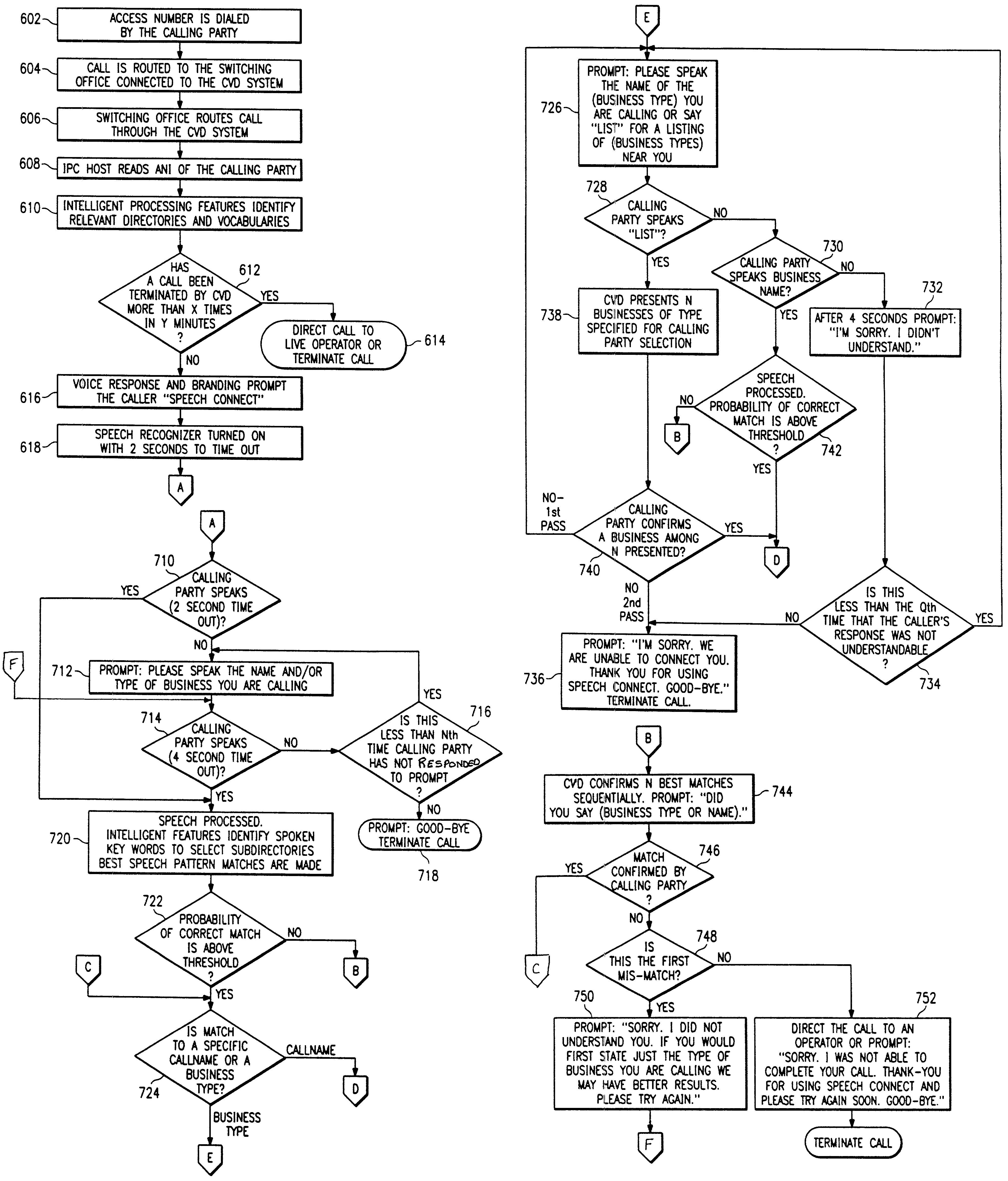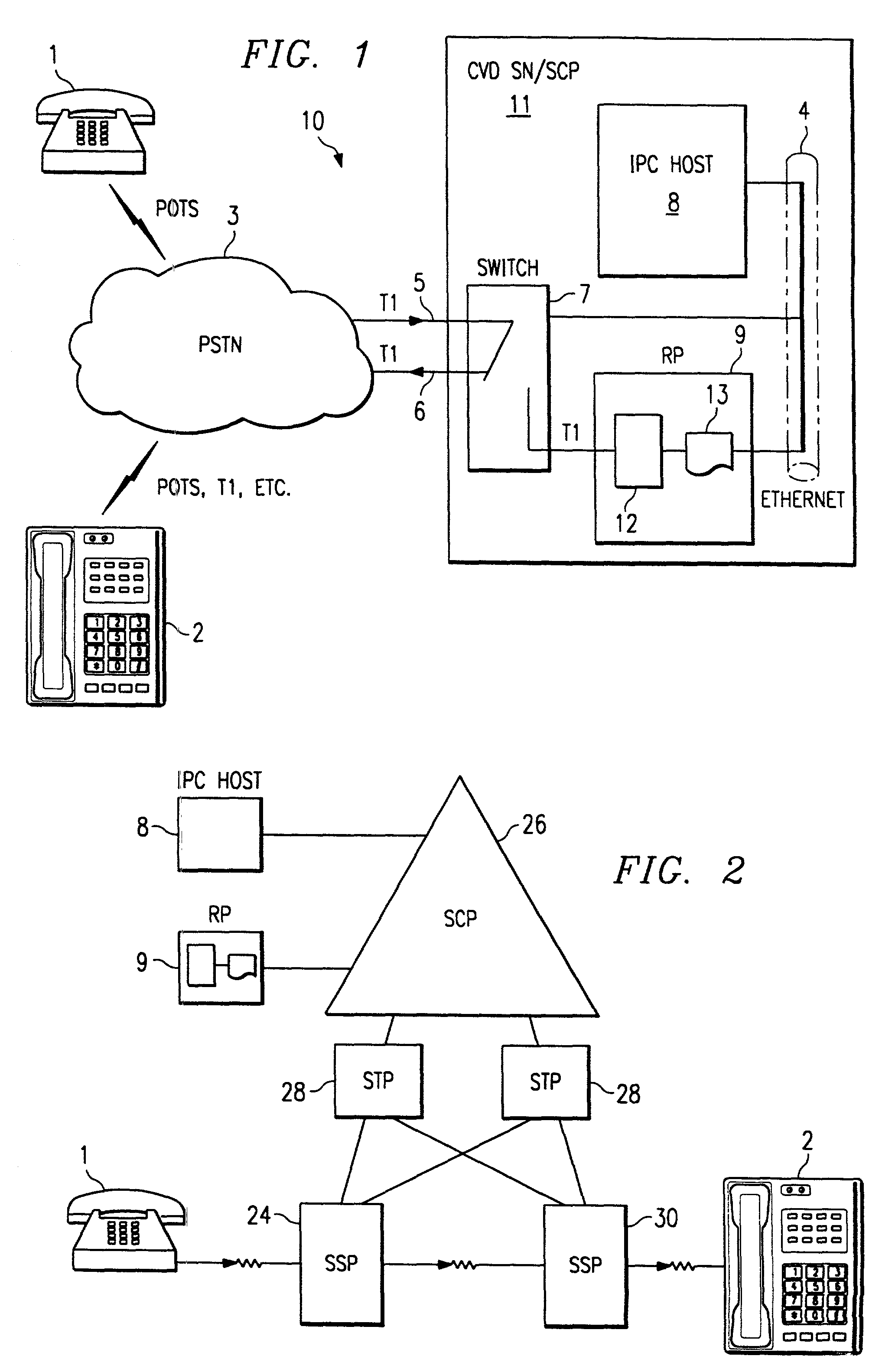Voice-activated call placement systems and methods
a voice-activated and call technology, applied in the field of telephone systems, can solve the problems of affecting the use of aide-memoir, affecting the quality of aide-memoir, and the quantity of good vanity numbers is still subject to problems, and achieves the effect of high responsiveness and easy adaptability
- Summary
- Abstract
- Description
- Claims
- Application Information
AI Technical Summary
Benefits of technology
Problems solved by technology
Method used
Image
Examples
Embodiment Construction
[0043]Turning first to FIG. 1, which is a diagram of the topology of the present invention at a very high conceptual level, it will be seen that CVD system 10 includes CVD calling party 1 who desires to make contact with a CVD-accessible terminating party 2 located remotely. Calling party 1 makes the call over a “Plain Old Telephone Service” (POTS) line through the Public Switched Telephone Network (PSTN) 3. The call may advantageously be a local call, or an 800 or similar call toll-free to calling party 1. PSTN 3 routes the call via inbound line 5, advantageously a T1, to CVD Service Node / Service Control Point (SN / SCP) 11.
[0044]As noted above, the present invention is not limited to specific architectures and / or deployments. The embodiment described below discloses using Service Control Point (SCP) architecture and deployment in an Advanced Intelligent Network (AIN) environment. It will nonetheless be understood that the present invention may also be enabled in traditional Service ...
PUM
 Login to View More
Login to View More Abstract
Description
Claims
Application Information
 Login to View More
Login to View More - R&D
- Intellectual Property
- Life Sciences
- Materials
- Tech Scout
- Unparalleled Data Quality
- Higher Quality Content
- 60% Fewer Hallucinations
Browse by: Latest US Patents, China's latest patents, Technical Efficacy Thesaurus, Application Domain, Technology Topic, Popular Technical Reports.
© 2025 PatSnap. All rights reserved.Legal|Privacy policy|Modern Slavery Act Transparency Statement|Sitemap|About US| Contact US: help@patsnap.com



